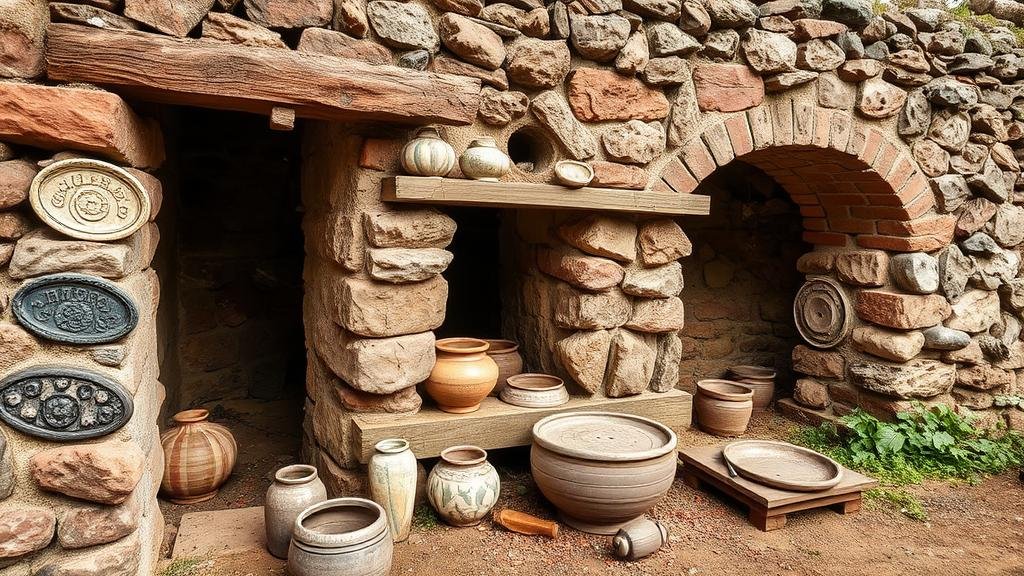Exploring Disused Community Kilns for Ceramics and Historical Relics
Exploring Disused Community Kilns for Ceramics and Historical Relics
The study of disused community kilns offers an invaluable insight into historical pottery practices, technological advancements, and local culture. These kilns serve as time capsules that reveal the socio-economic conditions of their respective eras and regions. This article aims to explore the significance of disused community kilns, the methodologies for investigating them, and the findings yielded from various case studies around the globe.
The Historical Significance of Community Kilns
Community kilns have played a vital role in local economies and cultures since ancient times. According to archaeological evidence, kilns were essential for the production of ceramics in various regions, including Europe, Asia, and Africa. For example, the ancient kilns located in the Southern Chinese province of Jiangxi date back to the Song Dynasty (960-1279 CE) and were pivotal in establishing the reputation of Chinese ceramics worldwide.
Also, community kilns not only produced utilitarian objects but also crafted items of significant aesthetic value. The pottery from the kilns reveals much about the cultural practices of the community, offering clues to rituals, social hierarchies, and daily life. A notable example is the kintsugi technique evolved in Japan, where broken ceramics were repaired with lacquer mixed with powdered gold, reflecting a philosophical mindset about beauty and imperfection.
Field studies of disused kilns generally employ a combination of archaeological methods, historical research, and scientific analysis. This multifaceted approach enables researchers to gather comprehensive insights into the kilns construction, usage, and the pottery produced.
- Archaeological Excavation: Excavations of kiln sites can uncover remnants of ceramic production, alongside tools and fuels used during firing. For example, a project conducted at the Sèvres porcelain factory in France, dating back to the 18th century, helped researchers understand the materials and processes that defined the local ceramic industry.
- Historical Documentation: Examining old records, such as local histories, documents from artisans, and advertisements, helps build a narrative around the kilns. city of Florence, Italy, is rich with archival material documenting how the ceramic market evolved during the Renaissance.
- Material Analysis: Techniques such as petrography or thermoluminescence dating can be applied to ascertain the composition of pottery and the age of fired materials. This aids in the classification of production techniques used over different periods.
Case Studies of Disused Community Kilns
Several key case studies have illustrated the impact of researching disused community kilns. These examples involve extensive investigations that have yielded significant findings.
1. Traditional Pottery Kilns in Spain
In the region of La Rambla, Córdoba, researchers excavated traditional pottery kilns from the 18th century. They discovered that the local artisans had adapted their processes to yield distinctive, high-fired pottery. The analysis indicated a community bond, where skills were passed down generations, underscoring the socio-cultural context of ceramics.
2. Abandoned Kilns of the Appalachian Region, USA
The Appalachian region is home to disused clay kilns from the early 20th century. A study conducted by the University of Kentucky examined these kilns, revealing information about the transition from community-based production to commercial ceramics. The team documented significant changes in materials and designs, mirroring broader industrial shifts in the United States.
3. Historical Kilns of Vietnam
The traditional kilns at Bat Trang village, a famous pottery village near Hanoi, have been subject to preservation studies. Researchers documented both the ceramics produced and the evolution of kiln technology. As noted by UNESCO, Bat Trangs approach emphasizes sustainable practices blending ancient methods with modern techniques, thereby safeguarding cultural heritage.
Conclusion and Future Directions
Exploring disused community kilns offers rich insights into historical ceramics and the cultures from which they emerged. This field also lays the groundwork for future research directions that could involve interdisciplinary collaborations. As augmented reality becomes more prevalent, researchers may integrate digital technologies to reconstruct the historical contexts of these kilns, providing immersive experiences for audiences interested in ceramics and history.
Actionable Takeaways
- Encourage local communities to document their heritage by exploring disused kilns.
- Promote partnerships between historians, archaeologists, and artisans to foster cultural preservation initiatives.
- Advocate for the inclusion of pottery and kiln studies in academic curricula to inspire future generations of researchers and artisans.
To wrap up, disused community kilns remain a fertile ground for historical and cultural exploration. Future research endeavors can not only help revive forgotten practices but also shed light on contemporary perspectives in ceramics, aiding in the sustainability and revival of this important craft.



